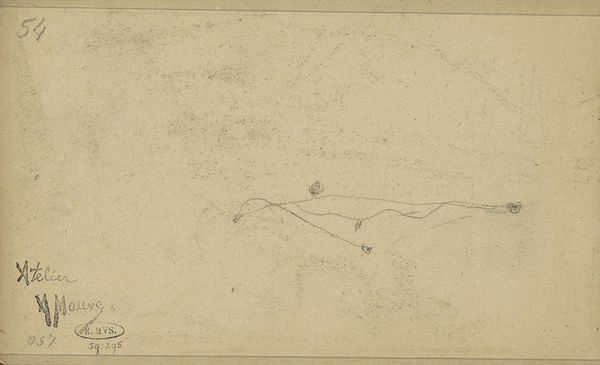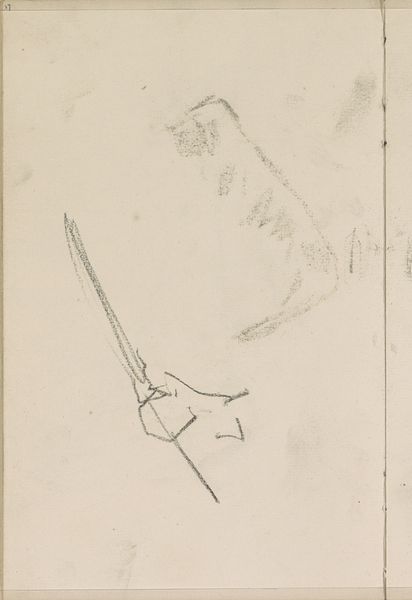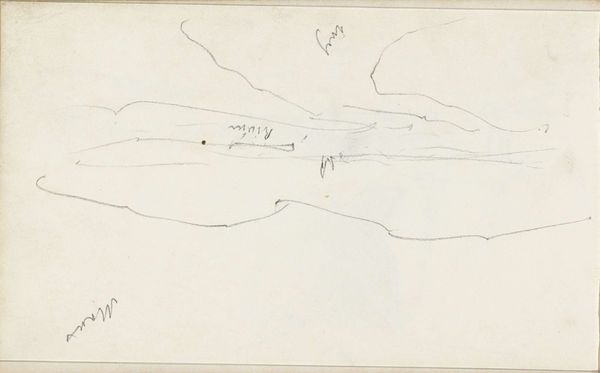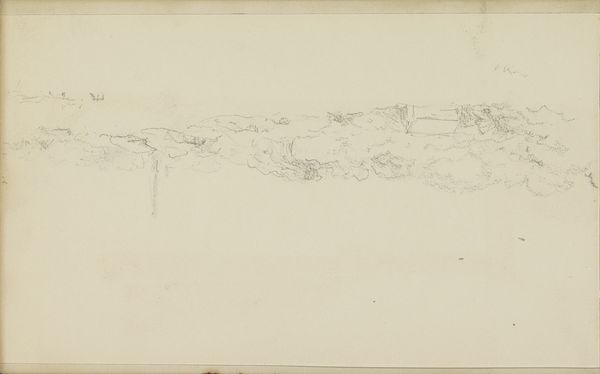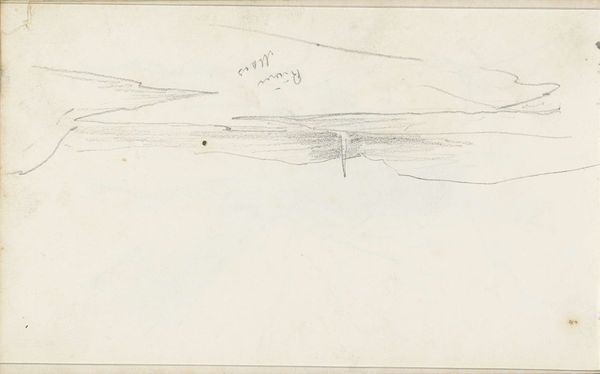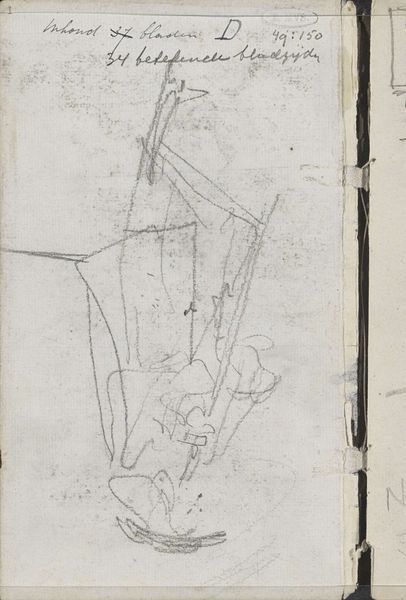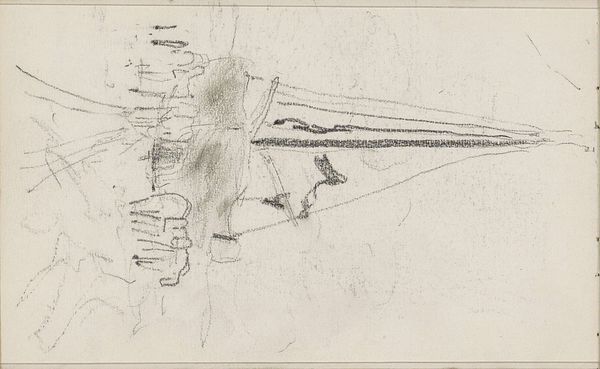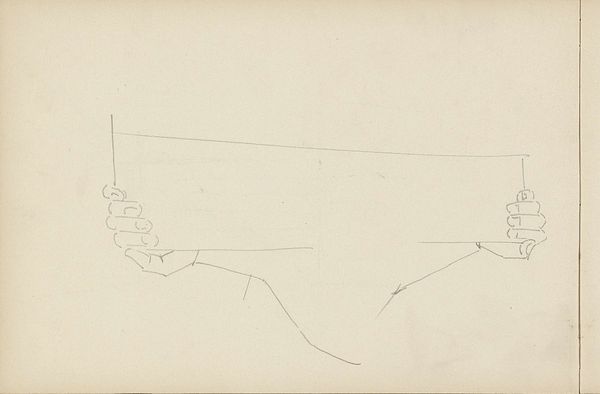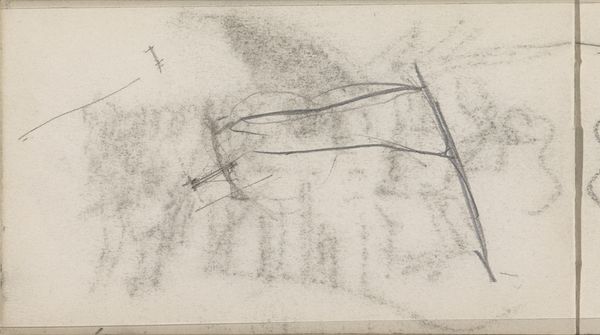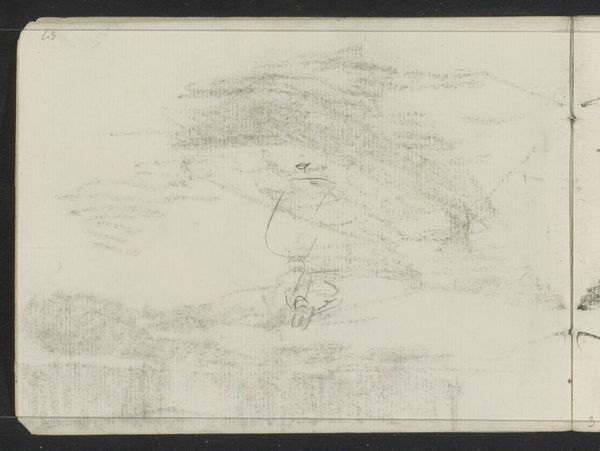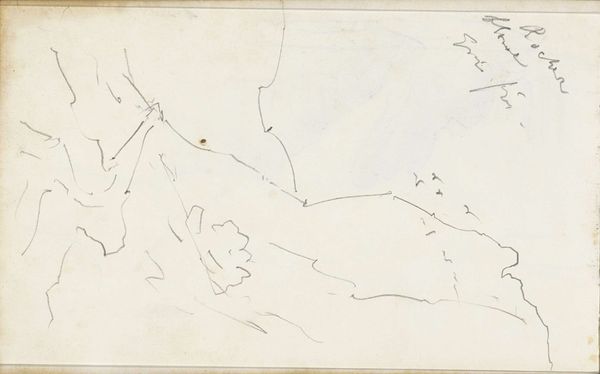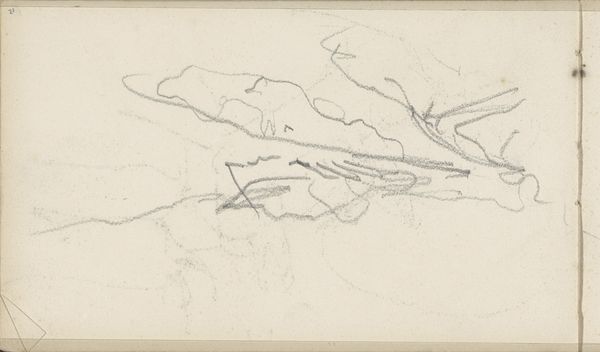
drawing, paper, pencil
#
drawing
#
amateur sketch
#
toned paper
#
light pencil work
#
dutch-golden-age
#
impressionism
#
incomplete sketchy
#
hand drawn type
#
landscape
#
paper
#
personal sketchbook
#
ink drawing experimentation
#
pen-ink sketch
#
pencil
#
sketchbook drawing
#
sketchbook art
Copyright: Rijks Museum: Open Domain
Editor: So, this is "Landschap," a landscape drawing by George Hendrik Breitner, made between 1881 and 1883. It's a simple pencil sketch, but it feels very immediate, almost like a fleeting thought captured on paper. What do you see in this piece that speaks to the history of art and its institutions? Curator: I see a glimpse into the artistic process, something usually hidden from the public eye. Breitner, later known for his Amsterdam street scenes, is here experimenting. The sketch's presence in the Rijksmuseum raises interesting questions. How did this informal drawing end up in a national collection? Was it valued as a preparatory study, or did it gain significance later because of Breitner's established reputation? Editor: That's interesting. So, the museum itself almost legitimizes it? It makes you wonder about all the other sketches that *aren't* in museums. Curator: Exactly. The selection and presentation of art are never neutral acts. Museums play a role in shaping what we consider "art" and who we consider important artists. Breitner's urban paintings aligned with a growing interest in portraying modern life and the working classes, giving art a new public role. Does this drawing connect to this social turn, or does it stay private and preliminary? Editor: I can see the connection to his later work now, this sort of 'snapshot' aesthetic. It seems less about idealizing nature and more about capturing a raw impression. Do you think his choice of subject matter had something to do with the political movements happening at that time? Curator: Absolutely. The late 19th century saw rising social consciousness. Artists like Breitner were part of a broader cultural shift that included increased visibility for ordinary people. The fact that the Rijksmuseum holds this sketch suggests a recognition of the value of this everyday perspective. Even a simple landscape drawing can offer insights into evolving social values. Editor: I never really thought about museums as active participants in defining art history before. This has completely changed the way I look at art and institutional settings! Curator: It's a perspective that constantly asks, "Who decides?" Understanding those forces at play deepens our understanding of art itself.
Comments
No comments
Be the first to comment and join the conversation on the ultimate creative platform.
